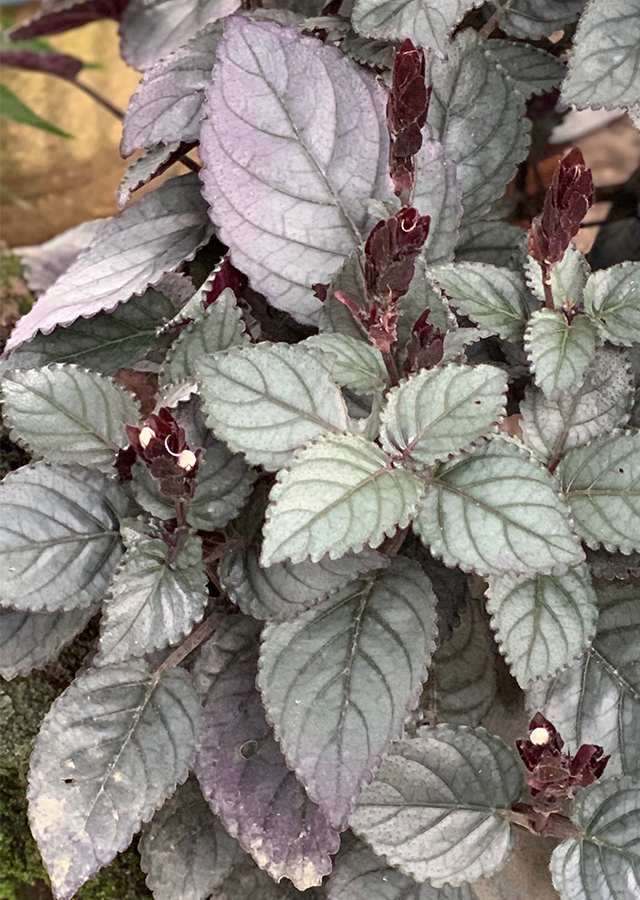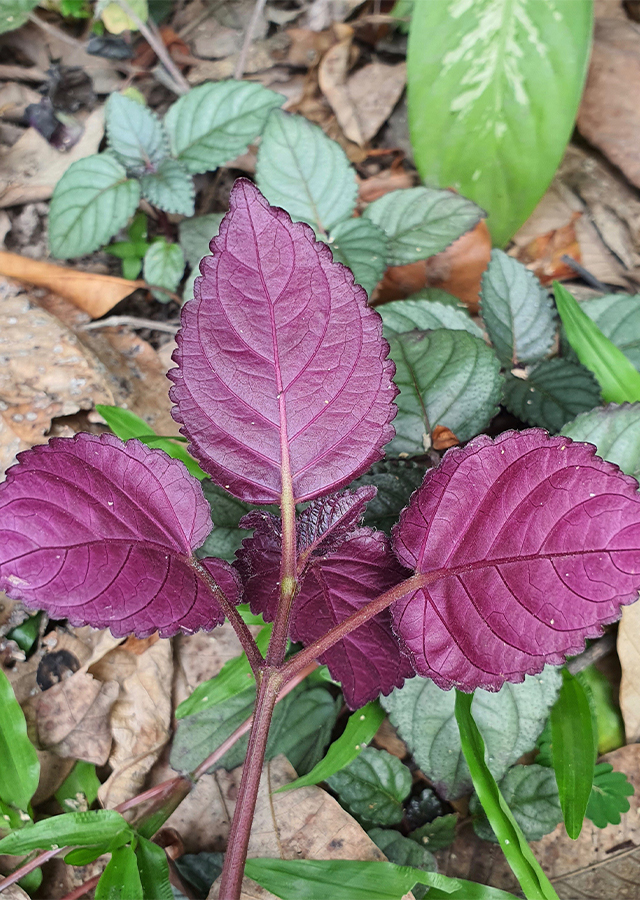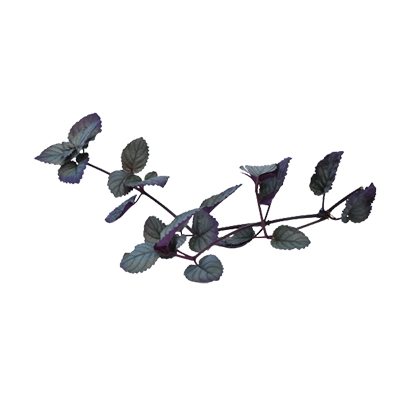Red Flame Ivy
Strobilanthes alternata (Burm.f.) Moylan ex J.R.I.Wood
Acanthaceae
Location in our garden
Principal



Synonym
Blechum cordatum Leonard
Hemigraphis alternata (Burm.f.) T.Anderson
Hemigraphis colorata (Blume) Hallier f.
Hemigraphis colorata W.Bull
Habitus
Climbers. Herbaceous perennial with a creeping growth habit.
Part Used
Leaves
Growing Requirements
Need Shade
Habitat
Forest
Grassland
Overview
Red Flame Ivy is native to Indonesia and widely cultivated in Japan, Malaysia and China, to India. The plant is commonly used as ornamental hanging plant. The attractive foliage makes this plant also known as Aluminium plant. It is reported that several tribes in India have used this plant as medicine to heal the wound.
Vernacular Names
Murian Pacha (India), Benatu Api (Malaysia), Kwaiwa (Papua New Guinea), and Noyon Gengen (Vanuatu).
Agroecology
The Red Flame Ivy may be found in secondary forests at 400 m above sea level. The plant grows well under semi-shades or full-sun, with temperature 15-17.5°C at night and 20-22.5°C during the day. For cultivation, it's best to use drained and moist loamy soils, also moderate watering is needed.
Morphology
- Stems: up to 35 cm high, subquadrangular, sparingly puberulous.
- Leaves: cordate, 4.5 - 8 cm x 3.5 - 4.5 cm, apex obtuse, base rounded and heart-shaped, margin crenate-ciliate, upper surface dark purple.
- Flowers: white, borne in terminal spikes up to 7 cm long, with large imbricate bracts. Calyx is green and 5-parted. Corolla is tubular, cylindric below, swollen above, 10 to 15 mm long, and 5-lobed.
- Fruit: dry, dehiscent fruits are known as capsules, small, oval, light green colour.
- Seed: small, flat and white in colour.
Cultivation
- It is propagated by stem cutting, leaf cutting and division.
Chemical Constituents
• Phenols, Saponins, Flavonoids, Terpenoids, Coumarins, Carboxylic acid, Xanthoproteins, Tannins, Alkaloids, Steroids and Sterol.
• The leaves contain flavonoids, polyphenols, tannins; stem contains saponins and tannins, while roots contain flavonoids and polyphenols.
• The leaves extract shows anthelmintic activity which performed against earthworms.
Traditional Medicinal Uses
- In order to mend gall stones, prolonged menstruation and as a contraceptive, the leaves are eaten.
- The plant has the tremendous power to pacify vitiated pitta, fresh wounds, cuts, ulcers, skin complaints and inflammations. In legend, to avoid bleeding, leaf juice is applied directly to an open wound.
- Leaves are used in Java to treat haemorrhoids and bloody dysentery (piles). Diuretic competence is often credited with it.
Part Used
Reference Sources
Siew, Y.Y., Zareisedehizadeh, S., Seetoh, W.G., Neo, S.Y., Tan, C.H. & Koh, H.L. (2014).Ethnobotanical survey of usage of fresh medicinal plants in Singapore. Journal of Ethnopharmacology 155: 1450-1466.
Woodson, R.E. & Schery, R. 1978. flora of Panama. Annals of the Missouri Botanical Garden 65: 155-284.

